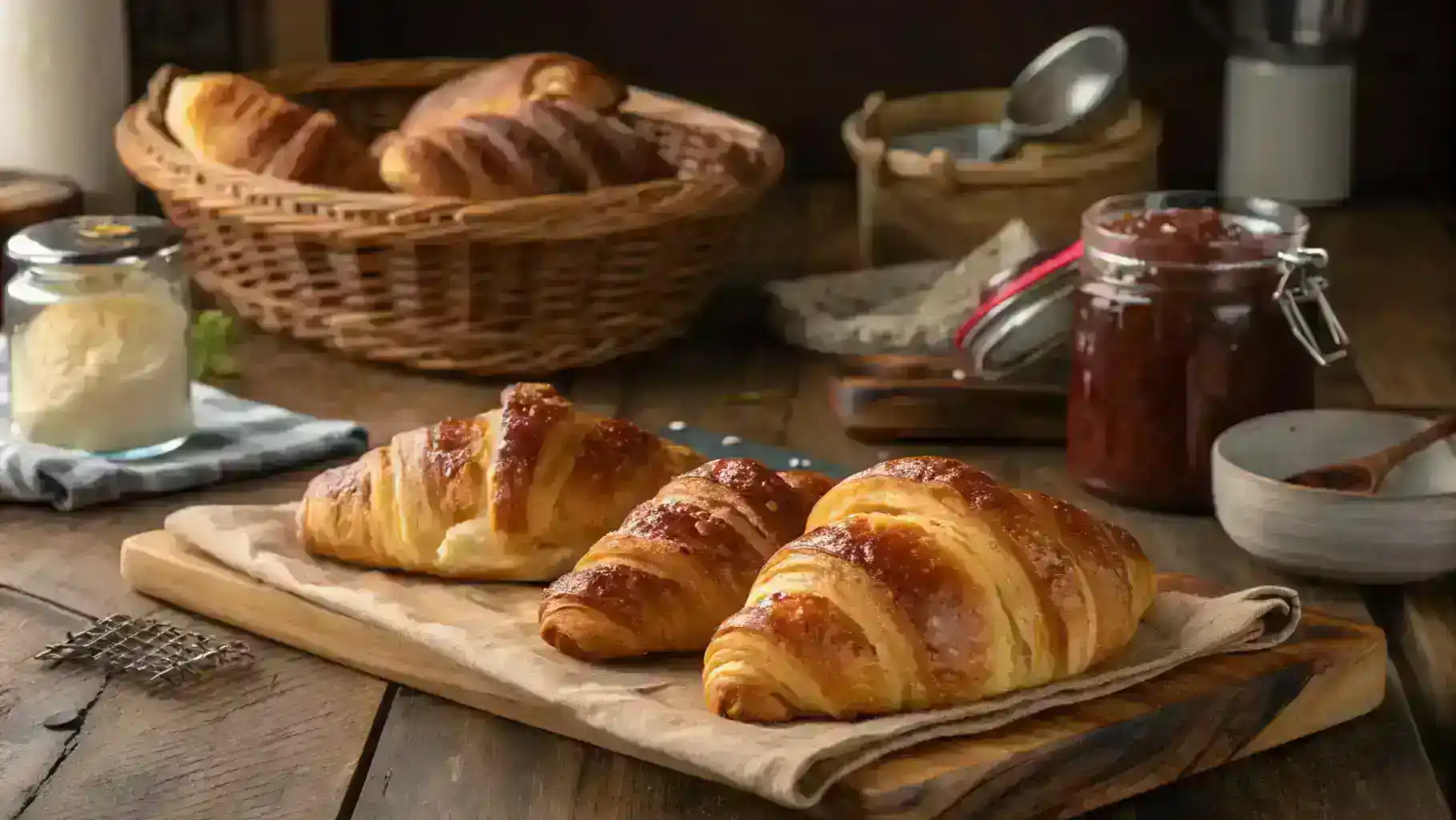Swiss bakeries create perfectly flaky, golden-brown pastries called Gipfeli. You might wonder how to make these delightful treats at home. The Swiss Gipfeli stands apart from French croissants with its firmer texture and reduced butter content, despite their similar appearance.
Swiss Gipfeli’s distinctive features include a tighter curl and smaller size. A subtle sweetness makes these pastries adaptable to various serving styles. Our kitchen tests revealed many variations that work well. The classic Swiss recipe remains a favorite, while the chocolate-filled schoggi gipfeli offers an indulgent twist. Creating these pastries demands patience. Multiple steps of rolling and folding build those coveted flaky layers. Creative bakers can even transform their Gipfeli into decorative shapes using techniques borrowed from croissant dragon recipes.
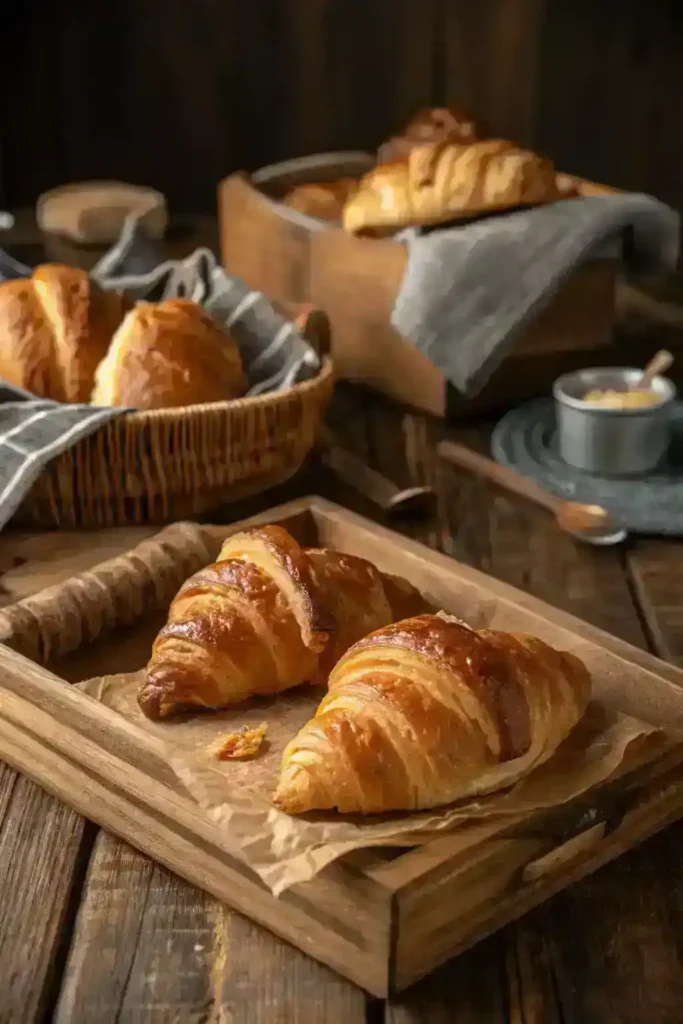
Let me guide you through each significant step of the process. The perfect Gipfeli requires careful selection of ingredients like high-protein bread flour and European-style butter. Achieving the ideal baking temperature of 200°C (400°F) plays a vital role too. Your homemade Gipfeli will rival any bakery’s version. Serve them warm with butter and jam or experiment with savory fillings – the possibilities are endless!
What Makes Swiss Gipfeli Recipe Different from Croissants
A visit to a Swiss bakery reveals those eye-catching golden crescent-shaped pastries. They might look like French croissants, but Swiss Gipfeli have their own distinct character that makes them special in Swiss culinary tradition.
Texture and butter content
Swiss gipfeli recipe and French croissants differ mainly in their texture and butter content. Gipfeli use less butter than French croissants, which gives them a firmer texture. French croissants break into flaky, airy layers with each bite. The Swiss version provides more resistance and features a crisp exterior with a slightly denser inside.
French croissants highlight rich, buttery flavors through lamination – layering butter between dough sheets. Swiss gipfeli aim to create a balanced pastry that doesn’t feel greasy yet stays crisp. Some Swiss bakers use margarine instead of butter to help their gipfeli stay fresh longer, though butter versions are just as popular.
Home bakers find Swiss gipfeli recipes easier to work with because they contain less butter. This makes the laminated dough process more manageable, especially if you’re just starting out.
Shape and sweetness
Both pastries come in crescent shapes, but Swiss Gipfeli curve more dramatically. The name “gipfeli” means “little peak” or “small summit” in Swiss German. French croissants have evolved into straighter shapes despite their name meaning “crescent”.
Swiss Gipfeli taste a bit sweeter than French croissants because their dough contains more sugar. This extra sweetness lets you enjoy them plain or try variations like chocolate-filled Schoggi Gipfeli and cheese-filled versions.
Swiss bakeries make their Gipfeli smaller and more compact than puffy French croissants. The tight, defined crescent shape needs specific rolling techniques to achieve the perfect form.
Cultural significance in Switzerland
Swiss food culture celebrates Gipfeli, particularly during breakfast. People across Switzerland start their day with these pastries alongside coffee or hot chocolate. German-speaking regions call them “Gipfeli,” while French-speaking areas might say “croissants,” though they remain uniquely Swiss.
Swiss bakers create many delicious variations:
- Nussgipfeli or Mandelgipfeli: Filled with a sweet nut or almond paste
- Schoggi-Gipfeli: Containing chocolate, similar to pain au chocolat
- Laugengipfeli: A pretzel-style version with a lye coating
Swiss people love their Gipfeli during “s’Nüni,” the traditional 9 am workplace break. French croissants gained worldwide fame, but Swiss Gipfeli showcase Swiss precision and baking expertise as a hidden treasure.
Learning to make traditional Swiss gipfeli connects you with this rich heritage. Many people find these Swiss treats just as delightful as their French cousins – sometimes even more so.
Essential Ingredients and Tools for Success
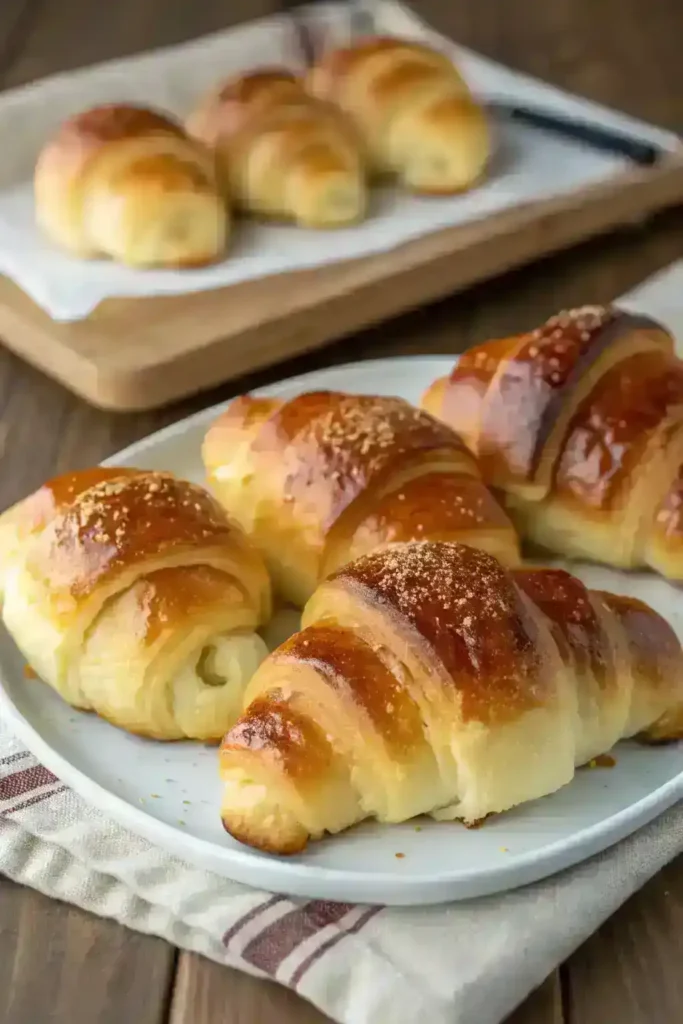
Creating perfect Swiss gipfeli recipe starts with the right ingredients and tools. You’ll need quality components and proper equipment. These are the foundations that create those amazing flaky layers.
Choosing the right flour and butter
The flour you pick makes a big difference in your gipfeli’s texture. High-protein bread flour works best since it gives you the gluten structure needed for those flaky layers. Swiss bakers use “Zopfmehl,” a special high-protein flour made just for enriched doughs.
Standard bread flour works great if you can’t find Swiss-style flour. Look for flour with 12-13% protein to get the best results. All-purpose flour can work too, but you might need to adjust how much liquid you use.
The butter choice is maybe even more important than the flour. European-style butter with 82% butterfat or higher creates those perfect flaky layers through lamination. Less water in the butter means better layers and crispier texture.
Keep your butter cold the whole time to get bakery-quality results. Cold butter creates steam pockets while baking. This pushes the dough layers apart and gives you that signature flakiness. Many pros suggest using a marble rolling surface to keep everything cool during lamination.
Why yeast temperature matters
Getting your yeast right is a vital part of any good gipfeli recipe. The milk should be around 105°F (40°C) – just warm enough to wake up the yeast without hurting it. Hot milk above 115°F (46°C) kills the yeast. Cold milk won’t get it going at all.
Active dry yeast needs 5-10 minutes in warm milk to get frothy before mixing it in. You can add instant yeast straight to your dry ingredients, but the temperature still matters while it rises.
The right temperature matters after mixing too. Your dough should proof between 68-72°F (20-22°C). This sweet spot lets flavors develop without melting the butter in your layers.
Light and airy texture comes from properly risen dough. This is what makes great gipfeli stand out. Rush the proofing time and you’ll end up with heavy, dense pastries that just don’t taste Swiss.
Must-have kitchen tools
You’ll need these basic tools to make great gipfeli:
- Rolling pin: French-style without handles gives better control
- Sharp knife or pastry wheel: Clean cuts make better triangles
- Pastry brush: Helps spread egg wash evenly
- Baking sheets: Get sturdy ones that won’t warp
- Parchment paper: Stops sticking and makes cleanup easy
A kitchen thermometer helps you get the milk temperature just right. A bench scraper is great for handling your delicate laminated dough.
Digital scales give you the most accurate measurements. Weighing ingredients works better than measuring cups, especially for flour which can vary a lot.
Good mixing bowls in different sizes help develop your dough properly. Glass or metal both work well. Metal bowls are better at keeping things cool while you work in the butter.
These quality ingredients and tools give you everything to try complex versions like schoggi gipfeli or fancy shapes inspired by croissant dragon recipes. Good basics are worth the investment. They help you get great results every time.
Step-by-Step Guide to Making Swiss Gipfeli Recipe
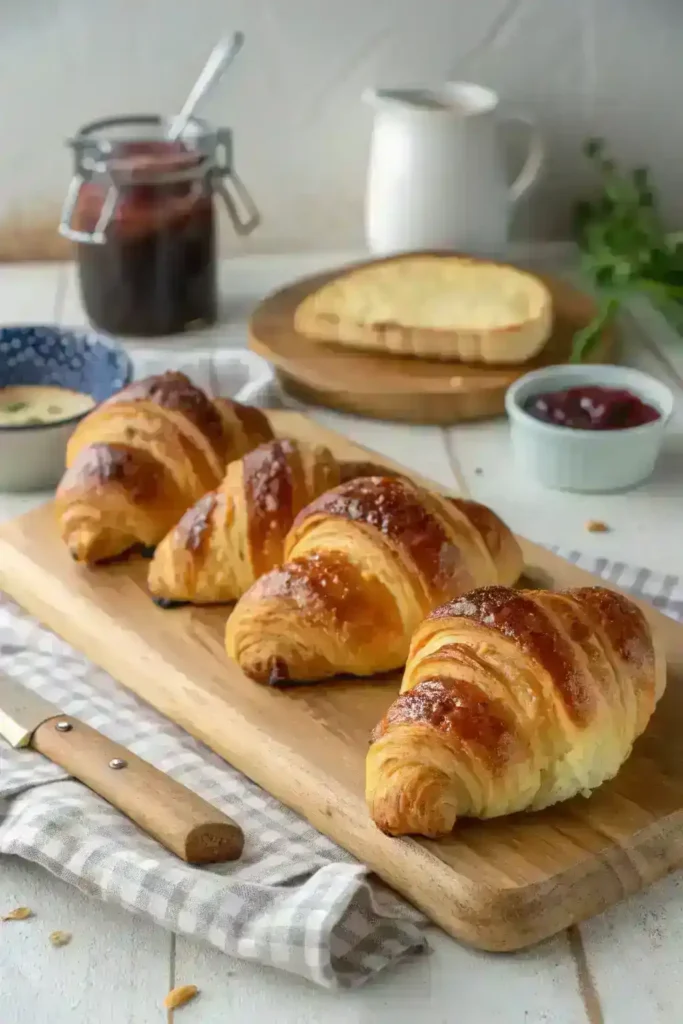
Making Swiss gipfeli recipe takes patience and attention to detail. Quality ingredients and a step-by-step approach will help you create these bakery-worthy treats.
1. Prepare the yeast dough
Your first step is to activate the yeast in lukewarm milk (about 105-115°F/40-46°C). Mix this with flour, sugar, and salt until you get a soft dough. Proper kneading is vital—knead for 10-12 minutes by hand or with a dough hook until the dough becomes smooth and elastic. The dough needs to rise in a greased bowl until it doubles in size, which takes about 1-1½ hours. This original fermentation builds flavor and creates the structure needed for flaky layers.
2. Laminate with cold butter
Roll out your risen dough into a large rectangle. The butter should be flattened between parchment paper sheets into a 9×9 inches (23×23 cm) square. Your butter needs to be cold yet pliable—neither too hard to crack nor too soft to melt. Cover half the dough with this butter block and fold the uncovered part over it. Pinch the edges to seal the butter completely inside. This step creates the base for those signature flaky layers.
3. Fold and chill the dough
Roll the butter-enclosed dough into a rectangle (about 16×10 inches/41×25 cm). Make a letter fold by folding one-third inward and following with the other third. Wrap in plastic and let it chill for 30 minutes. You’ll need to repeat this rolling and folding process three times, with chilling between folds. Keep everything cold throughout—if the butter softens, put it back in the fridge immediately. These folds create the multiple layers that give gipfeli their distinctive flakiness.
4. Cut and shape into crescents
After the final fold and chill, cut your dough in half. Keep one half refrigerated while you work. Roll each half into an 18×6 inches (46×15 cm) rectangle and cut it into triangles with a 5-inch (13 cm) base. Make a small 1-inch (2.5 cm) perpendicular cut at each base’s center to prevent excessive puffing and help form the crescent shape. Roll each triangle from base to tip with gentle stretching, then curve the ends inward for that classic crescent look.
5. Proof and bake to golden perfection
Place your shaped gipfeli on lined baking sheets and let them proof at room temperature for about an hour until they look puffy. Brush them with egg wash to get that characteristic golden shine. Bake at 400°F (200°C) for 5 minutes, then lower the temperature to 375°F (190°C) and bake for 10-12 minutes more until they turn deeply golden and flaky. The high initial heat creates steam that separates those carefully crafted layers.
Tips for Perfectly Flaky Layers Every Time
Those enviable, flaky layers in Swiss gipfeli don’t just come from having the right ingredients. The way you handle them matters most. Expert bakers know tiny details separate ordinary pastries from extraordinary ones.
Keep ingredients cold
Perfect lamination depends on temperature control as its life-blood. Butter at 40°F creates steam pockets that separate dough layers while baking. This creates the signature flakiness we all love. Your dough needs to go back in the refrigerator when it feels soft, especially if your kitchen temperature rises above 80°F. The best results come from chilled flour and a cold rolling pin. Many professional bakers prefer working on marble surfaces since they stay cooler than wood countertops.
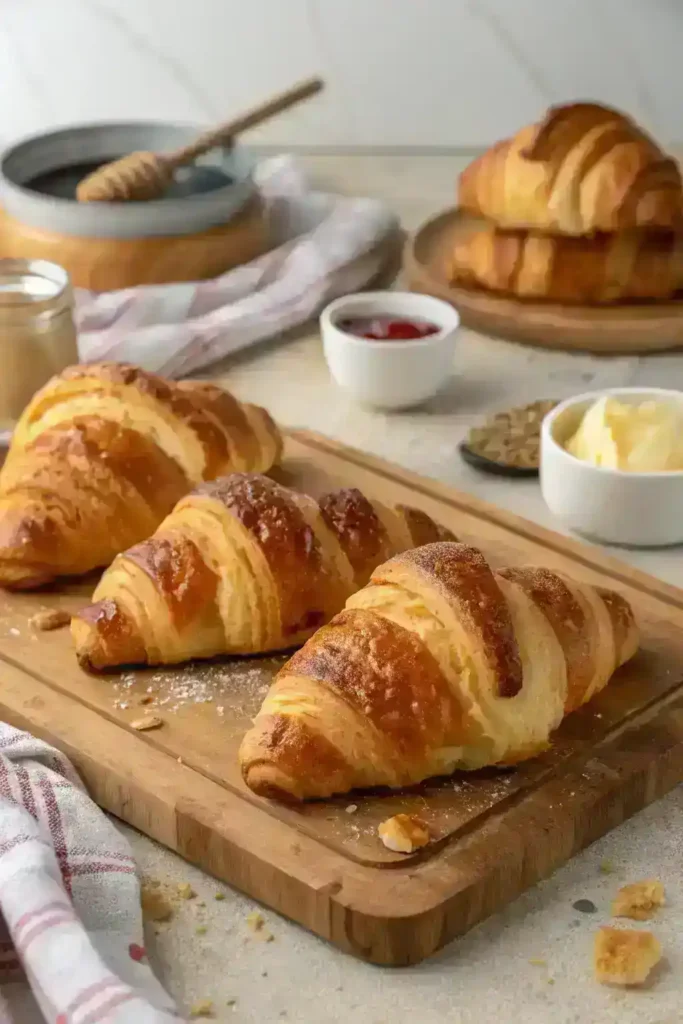
Don’t skip resting periods
Making great gipfeli takes patience. Those 30-minute cooling breaks between folds are crucial to build gluten and solidify butter properly. The butter melts into the dough instead of creating distinct layers if you rush things. Swiss bakers believe an overnight rest in the refrigerator improves flavor significantly. This slow, cold fermentation creates complex tastes that set authentic Swiss gipfeli apart from quick imitations.
Avoid overworking the dough
The final stages need a gentle touch. Tough and elastic dough won’t expand properly during baking if you work it too much. Light pressure works best after the final fold. The dough shouldn’t be pulled or stretched excessively. A smooth but not springy texture tells you it’s ready. Let the dough rest 5-10 minutes if it resists rolling. This rule applies to all but one of these variations, including schoggi gipfeli recipes.
Use egg wash for shine
A professional golden finish needs an even coat of egg wash right before baking. Mix one egg with about one tablespoon of water to create the perfect wash. Too much water dulls the finish, while none makes it too thick to spread. A soft pastry brush helps apply a thin, even layer. Make sure the wash doesn’t collect in the folds or it might prevent proper rising.
Popular Variations and Fillings to Try
The simple gipfeli recipe brings endless satisfaction, and learning about Switzerland’s beloved variations reveals a world of flavor possibilities. Sweet indulgences and savory treats show this iconic pastry’s versatility.
Schoggi Gipfeli (chocolate-filled)
Swiss indulgence shines through the Schoggi Gipfeli. This variation is like the French pain au chocolat, with high-quality dark chocolate wrapped inside flaky pastry dough. The rectangular shape helps contain melting chocolate during baking, which prevents too much oozing. You’ll get authentic results when you place thin pieces of bittersweet or semi-sweet chocolate at one end of the dough and roll it into a tight “sleeping bag for chocolate.” Some bakers dip the ends in chocolate after baking to make it even more decadent.
Mandelgipfel (almond-filled)
The classic pastry takes on new life as Mandelgipfel with its rich almond filling. Swiss bakeries use sweet yeasted dough instead of puff pastry to create its distinctive chewiness. The filling blends ground almonds, sugar, cinnamon, and apple juice (Süssmost) into a spreadable mix. Bakers finish it with a light icing drizzle and sometimes add toasted almond slivers. This creates a perfect balance between the pastry’s butteriness and sweet, nutty flavors.
Savory options like cheese or ham
Savory gipfeli variations make great appetizers or snacks. Schinkengipfeli’s delicious filling combines finely chopped ham, quark (farmer’s cheese), herbs, and a touch of mustard. Cheese gipfeli usually feature Swiss cheese or Gruyère that melts beautifully inside. These savory treats pair well with wine or add substance to a brunch spread.
Croissant dragon recipe inspiration
Your festive occasions can shine with gipfeli dough shaped using croissant dragon recipe techniques. Strategic cuts and folds in the dough before proofing turn the traditional crescent into an artistic showpiece. These eye-catching creations keep their delicious flavor while they raise your presentation game at special gatherings and holiday celebrations.
Conclusion
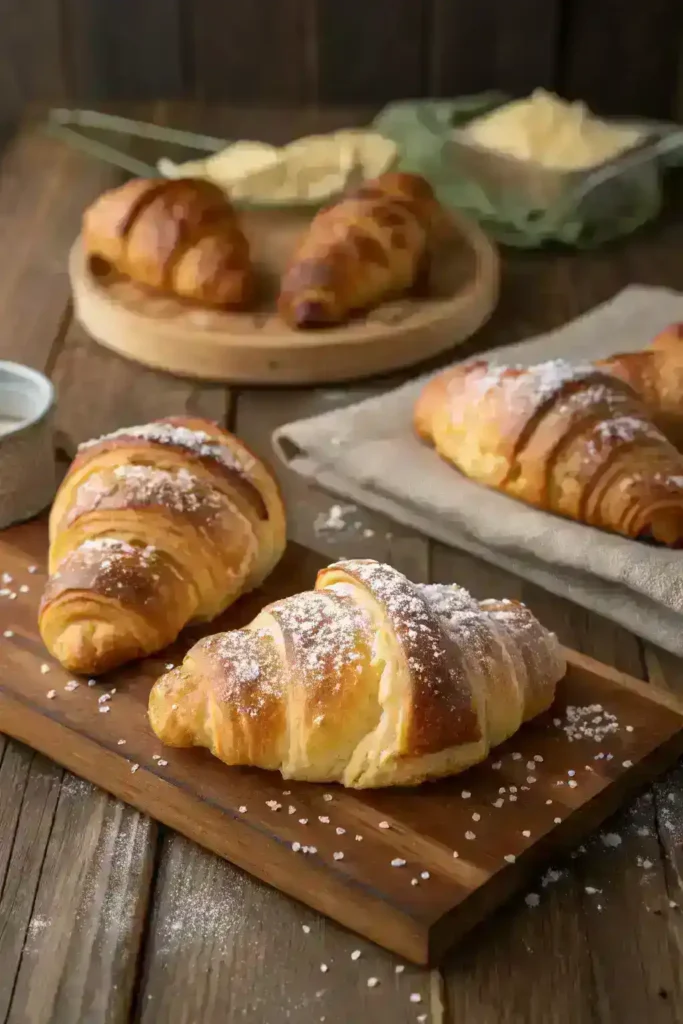
Making Swiss Gipfeli recipe at home takes patience and practice, but biting into those perfectly flaky, golden crescents makes every minute worth it. This piece explores what makes these Swiss pastries different from their French cousins. They have a firmer texture, use slightly less butter, and feature a characteristic tighter curl with a hint of sweetness.
Your success depends on small details. Keep your ingredients cold, respect those significant resting periods, and handle the dough with care. These technical elements combined with quality ingredients like high-protein flour and European-style butter create exceptional results.
The classic plain version, indulgent Schoggi Gipfeli filled with chocolate, or savory variations with cheese and ham – these versatile pastries suit every palate. Anyone can become skilled at these techniques by following the methodical process and attention to detail that Swiss baking traditions celebrate.
Don’t feel discouraged if your first attempt isn’t perfect. Each batch helps you learn and refine your technique. Once you’ve mastered the basics, try new flavor combinations or decorative shapes to make these pastries your own. You’ll find inspiration for complementary dishes to serve with your freshly baked gipfeli at recipesnutritious.com.
The process should be as enjoyable as the results. Professional Swiss bakers make it look easy now, but they started as beginners too. Your homemade Swiss Gipfeli will bring authentic Alpine charm to your breakfast table – without doubt worth the effort for those special weekend mornings when only something exceptional will do!
FAQs
Q1. What’s the difference between Swiss Gipfeli and French croissants? Swiss Gipfeli have a firmer texture, less butter, and a tighter curl compared to French croissants. They’re typically smaller, slightly sweeter, and have a more pronounced crescent shape.
Q2. What type of flour is best for making Swiss Gipfeli? High-protein bread flour with 12-13% protein content is ideal for Swiss Gipfeli. It provides the necessary gluten structure to support the flaky layers.
Q3. How important is temperature control when making Gipfeli? Temperature control is crucial. Keep ingredients cold, especially the butter, to achieve proper lamination. The ideal proofing temperature is between 68-72°F (20-22°C) for controlled fermentation.
Q4. What are some popular variations of Swiss Gipfeli? Popular variations include Schoggi Gipfeli (chocolate-filled), Mandelgipfel (almond-filled), and savory options like cheese or ham-filled Gipfeli.
Q5. How can I ensure my Gipfeli turn out flaky? To achieve flaky layers, keep ingredients cold, don’t skip resting periods between folds, avoid overworking the dough, and use an egg wash for a golden shine. Proper lamination technique is key to creating those signature flaky layers.

